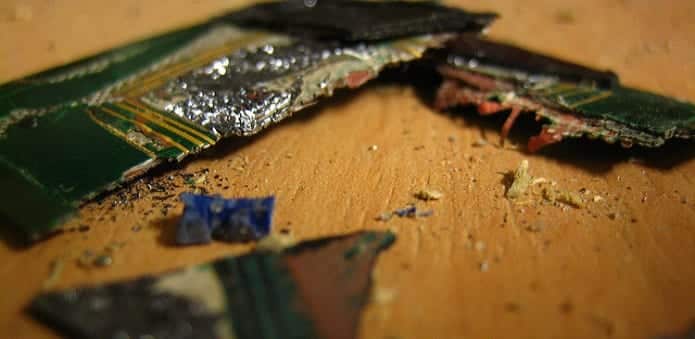DARPA’s self-destructing computer chip can be used to protect high security data
As a part of DARPA’s Vanishing Programmable Resources project, engineers at Xerox PARC have developed a chip that can self-destruct into tiny little pieces upon command, which is impossible to reconstruct. For high-security applications, this could be the potential revolutionary tool. Also, it could be utilized for storing of data such as encryption keys needed to access sensitive data.
It was demonstrated at DARPA’s event in St. Louis on Thursday.
“The applications we are interested in are data security and things like that,” said Gregory Whiting, a senior scientist at PARC in Palo Alto, California. “We really wanted to come up with a system that was very rapid and compatible with commercial electronics.”
To develop the chip, they used Gorilla Glass, the Corning-produced tough glass used in the displays of many available smartphones instead of plastic and metal.
“We take the glass and we ion-exchange temper it to build in stress,” said Whiting. “What you get is glass that, because it’s heavily stressed, breaks it fragments into tiny little pieces.”
On Thursday, the team demonstrated the technology at DARPA’s, where they used a laser to trigger the self-destruction process stressing the glass to breaking point by heat. When a circuit was switched on, a small resistor heated up and the glass broke into thousands of pieces. The stress continued to remain in the fragments even after it broke up, and they constantly kept breaking into even smaller pieces for tens of seconds afterwards.
For applications such as computer security, the chip offers an interesting prospect. The destruction of the chip can ensure full destruction of the encryption key immediately, if a chip manufactured in glass was used to store the key, maybe when the key falls into the wrong hands or as a part of the routine process.
The self-destruct circuit demonstrated at St. Louis was triggered by a photo-diode that switched on the circuit when a bright light fell on it. The light was provided by a laser in this case, but the self-destruction process can also be triggered not just by a laser, but also via radio signals or a physical switch.
Watch the demo below:
Resource: PCWorld

